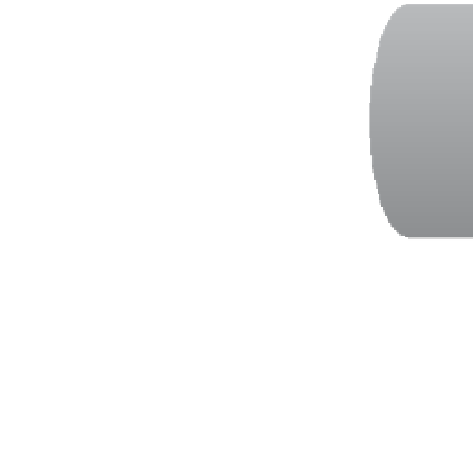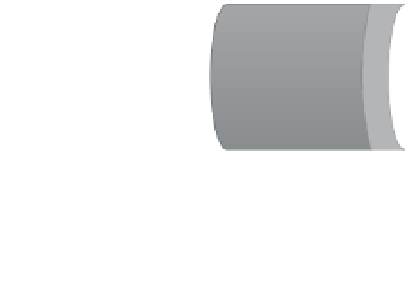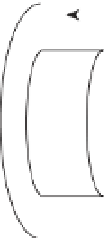Information Technology Reference
In-Depth Information
When you're using single-initiator/single-target zoning as shown in the i gure, each zone
consists of a single initiator and a single target array port. This means you'll end up with mul-
tiple zones for each ESXi host, so that each ESXi host can see all applicable target array ports
(again, at least one from each storage processor/controller!). This reduces the risk of administra-
tive error and eliminates HBA issues affecting adjacent zones, but it takes a little more time to
coni gure and results in a larger number of zones overall. It is always critical to ensure that each
HBA is zoned to at least one front-end port on each storage processor.
Reviewing Fibre Channel over Ethernet
We mentioned in the sidebar titled “How Different Is FCoE?” that FCoE was designed to be
interoperable and compatible with Fibre Channel. In fact, the FCoE standard is maintained by
the same T11 body as Fibre Channel (the current standard is FC-BB-5). At the upper layers of the
protocol stacks, Fibre Channel and FCoE look identical.
It's at the lower levels of the stack that the protocols diverge. Fibre Channel as a protocol
doesn't specify the physical transport it runs over. However, unlike TCP, which has retrans-
mission mechanics to deal with a lossy transport, Fibre Channel has far fewer mechanisms
for dealing with loss and retransmission, which is why it requires a lossless, low-jitter, high-
bandwidth physical layer connection. It's for this reason that Fibre Channel traditionally is
run over relatively short optical cables rather than the unshielded twisted-pair (UTP) cables
that Ethernet uses.
To address the need for lossless Ethernet, the IEEE created a series of standards—all of which
had been approved and i nalized at the time of this writing—that make 10 GbE lossless for
FCoE trafi c. Three key standards, all part of the Data Center Bridging (DCB) effort, make this
possible:
Priority Flow Control (PFC, also called Per-Priority Pause)
◆
Enhanced Transmission Selection (ETS)
◆
Datacenter Bridging Exchange (DCBX)
◆
Used together, these three protocols allow Fibre Channel frames to be encapsulated into
Ethernet frames, as illustrated in Figure 6.11, and transmitted in a lossless manner. Thus, FCoE
uses whatever physical cable plant that 10 Gb Ethernet uses. Today, 10 GbE connectivity is
generally optical (same cables as Fibre Channel) and Twinax (which is a pair of coaxial copper
cables), Ini niBand-like CX cables, and some emerging 10 Gb unshielded twisted pair (UTP) use
cases via the new 10GBase-T standard. Each has its specii c distance-based use cases and vary-
ing interface cost, size, and power consumption.
Figure 6.11
FCoE simply
encapsulates Fibre
Channel frames
into Ethernet
frames for trans-
mission over a
lossless Ethernet
transport.
Ethernet
Fibre
Channel
Traffic







































